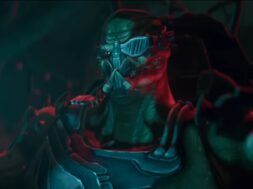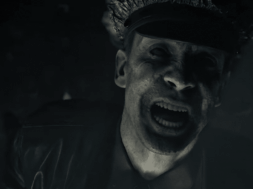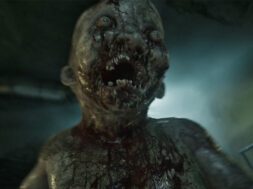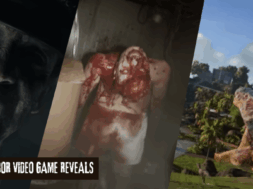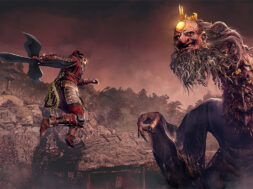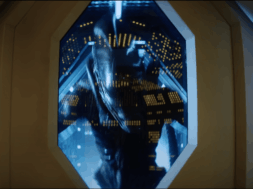“Once Upon a Time We Were Falling in Love”: Why Time Will Be Kind to ‘The Strangers: Prey at Night’
The Strangers has become well regarded as one of the best horror movies of the 2000s. Its reputation seems to only grow stronger every year, and deservedly so, as it is one of the most unbelievably tense films of the century so far. 2018’s The Strangers: Prey at Night, however, does not have anywhere near the same kind of recognition as its predecessor.
In some ways, it makes a lot of sense. Talk of a sequel began not long after the original was released, but the sequel didn’t actually come out for another ten years. That is a long time for a movie to build up in people’s minds. There was even periodic talk right up until Prey at Night went into development that Liv Tyler would return, either in a cameo or as a returning protagonist, but that obviously did not happen. The fact that it was released ten years later also no doubt made the sequel much tougher to market. It’s not like a 40th anniversary Halloween movie, where the franchise is immediately recognizable all over the world. This was the sequel to a movie that was successful, fondly remembered, but nonetheless no longer part of the public consciousness. In some ways, it feels like it was probably never going to be successful at the time.
But I think the main reason, above all else, that The Strangers: Prey at Night is not as celebrated as the first film is because it is an incredibly different movie. That is, without a doubt, the criticism I see lobbed at it the most, every single time the movie is brought up. It’s a different film, a different type of film, it doesn’t feel like the first. People who condemn it often point out that it feels like a different genre. And that is always the most baffling to me because all I can think is, “Yes, that’s the point.” As many criticisms as people may have toward the movie itself, it still seems that the thing it is most often condemned for also happens to be the thing that every other great sequel is praised for. Aliens feels like a different genre than the first, as do Exorcist III, Gremlins 2, Bride of Chucky, The Devil’s Rejects, even Hellbound: Hellraiser II. Sure, there’s absolutely something to be said for sequels like Friday the 13th Part 2 that refine and improve upon the original formula, but for the most part, the best sequels take a step to the left rather continuing down the same exact path, to push things in a new direction.
The Strangers might feature masked killers, but it is not a slasher movie, whereas the sequel very much is. That’s a sore spot, I think, for a lot of people, because they think by being a different type of movie it is betraying the first. Or worse, that Johannes Roberts didn’t get what made the original work. To me, that’s essentially saying “Oh, the sequel’s a slasher because they didn’t get that the original was a home invasion movie, or they didn’t understand why that worked.” Which is silly, because I think they very clearly did. I think many of the strengths of The Strangers: Prey at Night lie in subverting people’s expectations from the first film.
In fact, at the beginning, it’s almost the same movie, which is one of the things I love most about it. There’s an unexpected hallmark of the Strangers features in that they both drop the audience into the middle of an already strained relationship. In the original, we are introduced to our main characters as they return to their rented cabin immediately after she has turned down his marriage proposal. In the second, we’re meeting a family just as they’re heading out to drop their teenage daughter off at private school after one too many fuck ups. They’re different, of course, but the feeling of immediate unease and the way the backstory is explained bit by bit as it goes, is largely the same.
This especially works with the ritualistic nature of the killers. They’re doing the exact same thing they did the first time. Dollface goes to the door without her mask, asks for Tamara, waits, comes to the door, asks again, and things escalate from there. It’s exactly what they do, with the only difference being that now we know what’s going to happen as soon as that first knock comes, which generates a totally different kind of tension. The characters and setting might be different, but the set up is almost identical, even if things start happening sooner. And that’s smart, because it pulls the rug out from under the audience when things take a huge turn and it becomes—clearly—something very different from what people expected it to be. Not only is there the fact that a bigger group of characters means a bigger body count, but these characters also fight back in a way that neither the viewers nor the killers are entirely prepared for.
Even people who enjoy The Strangers: Prey at Night tend to label it more as a style over substance movie, which I think is a bit of a disservice to how smart the film actually is and why some of these stylistic changes are made. Scrolling through Facebook and Twitter comments, you’ll see no shortage of people complaining that it felt like they were watching a music video. The song choices are, admittedly, many. But they are also absolutely crucial, because they embody the one thing that the film is fundamentally about: control.
For our main group of characters, they are each attempting to hold onto a family dynamic that is spiraling. For Kinsey and Luke, in particular, it is about reclaiming their relationship with one another while also taking hold of their own lives. With that in mind, it makes sense that Kinsey is our protagonist, because at the beginning, she has no control over her situation. Her parents are directing the course of her life in the insistence that what they are doing is for her own good, whether she can see it now or not. Her attempts to lash out and rebel against this are incredibly minor; things like refusing to eat dinner, ignoring them when they talk to her, or storming out of the trailer mid-conversation. These things are small and definitely pathetic, because Kinsey already knows there’s nothing she can do; they’ve already left home and private school is on the horizon. This is happening whether she wants to admit it or not. It’s great to see her go from someone who, at the beginning, has zero control over the situation that she’s in, whose life is being fundamentally redirected by her parents because they do not trust her to guide it on her own, to eventually having to depend entirely on herself to survive.
The best thing about The Strangers: Prey at Night, however, is that this sense of control is even more explicitly embodied by the killers. More than maybe any other killers in horror, you can feel the intense amount of prep work that these unnamed masked murderers put into what they’re doing. They clearly laid out the entire area, they know the ins and outs, and they do absolutely everything they can to manipulate every situation and maintain the upper hand at any given time. That’s where the music comes into play. The music embodies this sense of control more than anything else in the movie and that’s made clear from literally the first second. Even Kim Wilde’s “Kids in America” over the opening credits turns out to be coming from the killers’ truck radio. It manipulates the audience, because what feels like a normal opening credits song turns out to be chosen by the killers as much as the filmmakers, as if the Man in the Mask is playing it just for us. Soundtrack choices in movies and TV are always about manipulating how we are supposed to feel as an audience. The Strangers: Prey at Night simply takes that idea and entrenches it in the actual narrative itself. In the context of the story, the song is playing not only as an opening credits selection for the audience, but as the first step in a murder plot being orchestrated by our killers.
There’s something inherently terrifying about that. Not only do we not know who these people are or what kind of lives they might lead when they’re not wearing the masks (I’ve always embraced the chilling idea that they lead perfectly normal lives until they get together for these homicidal sprees every so often) but we don’t know how they know that the family are coming to the trailer park, let alone how they know them at all. There’s too much prep work for them to be chosen at random, which is a very scary thought. They take out Aunt Sheryl and Uncle Marv right out of the gate, the song accompanying them as they do so, as a way of getting the environment exactly how they want it, so that they are already in complete control of the situation before Kinsey and her family even know that they are there.
Through most of the first act, everything seems completely calculated. Even when Cindy, their mom, is killed, horrific as it is, it conveys the same sense of control as depicted in the opening. Even though Kinsey escapes, that scene clearly depicts a murder that is going according to plan. But the scene that most explicitly conveys how the killers use music in their manipulation of the environment comes when they kill Mike, set again to Kim Wilde, this time “Cambodia.” This was the scene that really made me look at the way music was used in the film because it is such an interesting, clearly deliberate choice. The Man in the Mask has the dad right where he wants him and can do whatever he wants, take as much time as he wants, without any risk of escape. The poor guy is literally pinned behind the wheel, and he’s not going anywhere. This allows the Man in the Mask to almost take a breather for a moment. He sits in the car doing absolutely nothing, only searching the radio while Mike begs for his life. And he does not kill him until he finds the right song, which I think is an absolutely crucial detail to understanding these killers and how they operate. It’s not just about setting the mood, it’s about dictating exactly what happens in this environment.
Unlike the original film, the killers lose the upper hand and even meet their eventual comeuppance. But what Prey at Night does so brilliantly is that when this loss of control happens, the soundtrack reflects that, too. This happens most explicitly when Luke takes on the killers by himself, in what is without a doubt the film’s most celebrated sequence: the showdown at the swimming pool. Set to “Total Eclipse of the Heart,” this is the scene that even people who hate the movie tend to commend, while others have said that the music choice takes the viewer out of what would otherwise be a very tense moment. But as I’ve probably made clear, I think the music is vital to the core of this movie, from beginning to end, and perhaps in this scene most of all.
This is the moment when the whole movie shifts, because this is the moment when—no matter how they try to regain it—the killers fundamentally lose the sense of control they have had from the beginning. It happens when Luke kills the Pin Up Girl. The Man in the Mask, whose persona in both movies had been entirely dispassionate up to this point, starts lashing out wildly. With “Total Eclipse of the Heart” blaring throughout the entire sequence, the pool showdown is unbelievably tense and it’s easy to see why it is so fondly remembered as the highlight of the entire movie. I’ve seen a couple of people argue that it would be better without the music, which makes it too showy and stylistic, but I think that sells the film short. Every song is included for a reason and means something specific to where in the movie it is placed, and “Total Eclipse of the Heart” is no different. As the scene shifts, as the killers lose the upper hand, the music reflects that. In the most obvious and un-subtle sense, there’s the fact that this song, preaching about loss and a heart turning to stone, plays over both the death of the Pin Up Girl, Luke taking a life, and what we’re at first led to believe is Luke’s death.
But it’s not the lyrics or the song itself that signal this transitional moment in the film and the overall loss of control, it’s the way the song gets distorted. As Luke and the Man in the Mask fight from the poolside down into the water, they periodically sink beneath the surface, where the song drifts away and only the rumbling bass can be heard. If I’m reading too into it, I’m more than happy to, because I think this is great. I think the distortion of the song absolutely showcases the moment the killers lose control, with every thing that happens after this scene being about their increasingly aggressive attempts to regain it. This is when everything slips out of their hands. When the Man in the Mask’s persona crumbles, even if he doesn’t take his mask off. This is the moment when the song they have chosen to ironically accompany their murder spree fails them, for the first time, when they sink beneath the water to discover that down there, there’s no clever soundtrack, and the song only sounds like thunder.
When Kinsey takes her stand against the Man in the Mask, he’s still committed to having a soundtrack, blasting Air Supply’s “Making Love Out of Nothing at All” from his truck’s radio, but by this point the illusion has been stripped away and his intimidation tactics only come off as acts of desperation. Everything at this point is about holding on to the illusion of control and maintaining his persona, both of which he has already lost to some degree. What I think The Strangers: Prey at Night ultimately shows is that no matter how much both families, as it were, struggle for control, no one ever really achieves it by the end, because it kind of doesn’t exist. At every turn, the upper hand, no matter how much planning went into it, is seized only by opportunity. It’s all left up to chance. Luke only happens to catch the Pin Up Girl off guard and here, in the final showdown, Kinsey happens to see the gas leaking out of the Man in the Mask’s truck and recognizes the opportunity it presents. Once again, the film seems to stop for a second as she throws down the lighter, and it’s another transitional point. Now, the song continues to play, louder than ever, but it’s a soundtrack that’s playing in her favor, not the killer’s.
All in all, it seems like The Strangers: Prey at Night was almost tailor-made to not be a movie that people would respond to at the time. Like The Texas Chainsaw Massacre 2, it was a tonally different sequel that came a little too late. On that level, I do entirely get why it didn’t exactly take the horror world by storm. But I think it is, without a doubt, one of the best slashers of its era. The things that make it stand apart from the original are things that I think will come to be recognized as its strengths over time, just like so many re-evaluated sequels before it. It’s entertaining in a way the first wasn’t meant to be. Instead, it’s much more of a roller coaster ride than an assault on the senses, but it’s also a whole lot smarter than it is given credit for.
And that, I would like to hope, will be the key to its eventual success.
